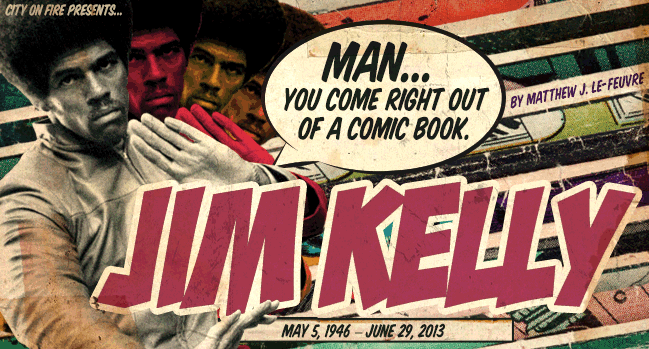 Jim Kelly was a singular individual… period. Although for some – particularly critic – he was just another standard action contractee of the Blaxploitation era recalled in idle conversations notably for his co-starring credit opposite the late Bruce Lee in Enter the Dragon (1973), and a vernacular of deadpan, cynically delivered one-liners. Is this the only legacy Jim Kelly bequeathed to a united nation of grieving fans and ageing film Historians; nostalgically pining for the “grand old days” before the advent of CGI and a barrage of unnecessary re-makes: The answer is No.
Jim Kelly was a singular individual… period. Although for some – particularly critic – he was just another standard action contractee of the Blaxploitation era recalled in idle conversations notably for his co-starring credit opposite the late Bruce Lee in Enter the Dragon (1973), and a vernacular of deadpan, cynically delivered one-liners. Is this the only legacy Jim Kelly bequeathed to a united nation of grieving fans and ageing film Historians; nostalgically pining for the “grand old days” before the advent of CGI and a barrage of unnecessary re-makes: The answer is No.
For the majority old enough to remember 1970’s cinema, defined at that time by a crumbling studio system formely constructed on baroque extravagance and the pursuit of power, traditionalism was woefully stepping aside for a new elite whose creative voice was steadily drowning their conventional forebears in an ocean of cultural indifference.
From this outset, Jim Kelly was the epitome of ‘cool’, ‘of strength’ in a flagging world governed by political and social divisions: Race riots, Vietnam and the Watergate scandal all surface to mind. And while the Democrats and the Republicans dueled endlessly with fervid tongues, the face of oppression had already given birth to the Black Panthers, a no-nonsense organization temporarily involved in trying to promote civil rights, but failed within the US senate to ignite a true understanding of their collective plight. They became outcast as much as Malcolm X, the hippy movement or the Hell’s Angels even. No-one was listening, nobody cared, and notions of ‘freedom’ or at least ‘expressions of freedom’ were alternatively relegated to filmmaking, art, music and literature.
Kelly, however, remained as ever a neutral figurehead wisely dispensing any political bias. Instead, he chose to concentrate on projecting an optimistic stance that was generated from inner discipline rather than a negative ego. Indeed, away from cameras, difficult schedules and/or (the) militant commands of producers/directors, Kelly was an advocate of ‘peace’, an affable man who enjoyed fraternizing with fans at comic book conventions or through other outlets of social media. Yet beneath this flexible exterior hid a very complex, competitive personality whom it seemed, felt more comfortable exerting his personal philosophies, via a sharp backfist, a flashy hook-kick or a defiant glare than zealously pitch racial inequality by means of obvious routes.
Armed with a slender, though imposing chisled physique, and a somewhat mountainous afro that resembled a shrubbery than a fashion statement, Kelly set himself a near impossible target of becoming the first “Black Martial Arts Star!” (as he latterly quoted for numerous interviews); after all, Sidney Poitier, Melvin Van Peeples and Jim Brown were already chewing up the scenery as celluloid embassadors fighting against exploitation and discrimination in their own unique manner way before Kelly’s path (to self-realization) had manifested itself in the form of movie stardom. But regardless of friendly rivalry from peers or contemporaries such as Fred Williamson, Ron O’Neal or Richard Roundtree, determination and an inherentathleticism would naturally in the flow of all things spiritual prevail over biggotry or ‘Genre’ isolation, in favour of score marking Kelly as one of the most enduring, striking, as well as exciting, screen icons of the cult B-circuit.
Born into a working class family in Millerburg, Kentucky on the 5th May 1946, James Milton Kelly stood tall and proud even at a young age where his interests, primarily, focused on football and basketball, between helping his father ministrate a locker rental service for visiting Navy Personnel. Although educated at Bourbon County High school where he met his future (first) wife, college sweetheart, Marilyn Dishman; Kelly harboured deep aspirations to escape the harsh Southern backdrop of class segregation and follow in the footsteps of his equally famous cousin, Willie Mays – a Baseball legend active from 1951 – 1973 – whose batting averages/home runs were 302 and 660, respectively. Arguably hailed as one of the greatest Baseball players of the 20th century, Mays was an obvious role model to his younger relative, by now entrenched in the rudiments of nutrition and physical education.
Emancipation, no less, arrived in part as a scholarship award to the University of Louisville. There, for a transitory period, the freshman devoted himself to a career in athletics until a racially motivated incident caused Kelly to re-evaluate himself; his place in the Universe and it was at this juncture the call of his inner soul urged the eighteen year old to leave behind the world of track & field for a journey inaugerated by a sudden pursuit in Karate.
Moving to Lexington, he enrolled at Sin Kwan’s Dojo, quickly earning respect for his serious application. Attentively, he asked questions concerning techniques; the reasoning behind pre-arranged movements, Katas and so forth. Upon graduation as a first-Dan Black Belt, Kelly sought to expand his martial arts knowledge. He further trained in Okinawan-Te under the triumvirate direction of Parker Shelton, Nate Patton and Gordon Doversola shortly before winning the pretigious World and Middleweight division ‘Karate’ tournaments at Longbeach. These outstanding accolades gained him the reputation needed to establish his own studio in Crenshaw, Los Angeles.
Despite the collapse of his marriage, Karate (for him) had morphed into a passion, a way of life; a mode of expression, of research and experimentation – notably the latter when he began to observe other distinct fighting structures. He studied Wrestling, Jiu-Jitsu and most importantly, Muhammad Ali’s footwork: The pros and cons, the advantages, the disadvantages, little realizing that a virtually unknown Bruce Lee had previously conceptualized the foundation of what is now presently thought of as Mixed Martial Arts (MMA). Nevertheless, Lee’s Jeet Kune Do remains at its core a singular philosophy neither opposing or championing over every style, but merely counteracting, intercepting or adapting to any or all situations and environments, regardless of doctrine or belief.
Prior to his actual meeting and prospective working relationship with the legendary Bruce Lee, needless to say, Kelly was already enamoured with ”The King of Kung Fu”. However by his own admission He never got the opportunity to watch The Green Hornet’s (1966) first network broadcast. Kelly’s initial exposure to Lee – whose martial renown was now augmenting beyond the maxim of “mythic proportion”, was through his controversial articles on self liberation for Black Belt Magazine; as well as a minor, yet highly charged cameo for Sterling Silliphant’s contemporary revision of The Little Sister (aka Marlowe), released in 1969. Kelly would later describe Lee’s debut as ”impressive” and “very cool!”
Kelly’s own film debut was connected via his personal friendship with cult actor, Calvin Lockhart – remembered for his standout collaborations opposite the award winning, Sidney Poitier in Up Town Saturday Night (1973) and Let’s Do It Again (1974). Lockhart’s filmography also includes the Amicus classic The Beast Must Die (1974), an unusual horror thriller which stylishly mixed lycantrophy with who-done-it noir. While Lockhart maynot have been exactly in the calibre of leading man status, wheels otherwise were set in motion when executives at Metro-GoldwynMayer cast him as Frankie J. Parker, a high kicking, vivacious disc jockey for Hugh A. Robertson’s largely forgotten action drama Melinda (1972). Though alleged reservations were raised, Kelly was hired to train Lockhart, co-supervise the choreography in addition to a small supporting role as Charles Atkins: a Karate instructor who comes to the aid of his friend at the eleventh hour following Parker’s impromptu entanglement with a Chicago mobster, and his former mistress. Vanetta McGee played the titular character discovered murdered in Parker’s apartment: A situation that spirals into a domino effect whereby our protagonist has no option but to administrate his own court of law.
Urban and gritty Melinda engagingly capitalized on the 70’s preoccupation with violence and social disintergration. Everyone appears to be motivated by something, fueled either by avarice or self preservation. Parker himself (before vengeance infuses control) could be aptly classed as a ‘lone Wolf’, and despite an amorous, not quite predatory exterior the world in which he inhabits; moreover, could be juxtaposed as both rudderless and cosmopolitan. Yet behind notions of unattachment, danger shadows every corner: deliberate or latent.
Pastiche or not, Lockhart gave a credible performance made, interestingly, more refreshing under Kelly’s offscreen tutorlage. However, it would be Blaxploitation star, Rockne Tarkington – a tall , burly actor with aquiline set features and an imposing demeanor who is perhaps better known for his role in Black Samson (1974) and as a recurring character in the short-lived Matt Houston TV series (1982–1985), unknowingly helped Kelly catapolt from relative obscurity into a major support on the strength of Tarkington’s abdication from his contract with Tinseltown financiers: Paul Heller and Fred Weintraub for a co-production commemorated in the annals of action cinema as the “Greatest Martial Arts Movie Ever Made!” Indeed Enter the Dragon requires little or no introduction in its implications as a seminal masterpiece, and while abstracts of originality maybe secondary in construct, its leading man, Bruce Lee, was by definition, the cardinal ingredient to this hand-to-hand espionage cocktail inspired by a literary lineage stretching as far back to Ian Fleming’s Dr. No (1958) adventure, and Sax Rohmer’s Fu Manchu novel, The Devil Doctor (1916).
Screenwriter Michael Allin obviously had no reservations when he endeavoured to scribe a treatment (for Weintraub) that would best exemplify Lee’s burgeoning internationalism. Afterall, in the eyes of commerce: one star needed another… or two! Lee was, well, Lee (or Li); TV heavy/regular, William Smith was to be Roper, and Tarkington – the quinessential underdog sacrificed at the finale. Ultimately, Blood and Steel (first working title) expanded into a modest screenplay befitting actual locations, external grandiosity and exoticism on a near shoestring budget, Allin was awarded a vacation to the crown colony, meantime Tarkington prepared for the part of the lingo expressive, but truculent Williams until an alleged dispute over his salary prompted him to stick two fingers up at Weintraub. How Kelly became involved as Tarkington’s replacement was either by providence or Weintraub’s terminal desperation?!
Eventually tracked down by Weintraub at his Crenshaw Dojo, Kelly was immediately signed following a demostration of his art form and general comportment. No screentest was needed as his prior credentials for Melinda sufficed; nevertheless, he still had to be coached in an intensive drama workshop. This was a requisite practise for all newcomers, and in Kelly’s case, it was a succinct opportunity to discover and understand Williams’ motivations. From the outset, we learn Williams is a survivor, an ex-Vietnam soldier – tough and conceited. However beneath this veneer conceals a warrior guided by an almost contradictory ethics.
Early on, he confidently assaults two racist militants (who wouldn’t!), yet on the otherhand speaks up for the under priviledged: “Ghettos all over the world… they stink!”, as he bemoans to his estranged army buddy Roper (now played by John Saxon in favour of an unlikely cast Smith). This pattern of duality continues: in a throwaway manner he disregards rules, though projects a smidgen of (his) humanity during Bolo Yeung’s ruthless execution of Mr. Han’s palace guards. When asked if he’s shocked, Williams camouflages his evident disdain with bravado; just as he does during a rather forceful interview with the aforementioned host. Once more, Williams invokes a refractory stance and nobly refuses to betray Lee, thus consequently forfeits his life against a formidable exponent martially far experienced in both technique, as well as brutality.
In spite of a haphazard production marred by numerous obsticles such as language problems, John Saxon’s alleged dialogue pinching manoeuvres, as well as Lee’s impassioned spat with Allin; rumours further esculated into gospel about ad-lib script changes pertaining to Roper’s mortality. Although Saxon has denied these alterations to suit his ‘star’ credit, fans have always felt swindled by Kelly’s unexpected exit. The overall concensus is: (A) Williams should have squared off against Bolo, and (B), Han’s minions, instead of Roper’s determined, albeit graceless attributes.
Contrarily, the film’s director, Robert Clouse, then-known for one picture Darker Than Amber (1970), compromised beyond all possibility until the squalid conditions at Golden Harvest’s Hammerhill Studios blitzed him to the point of artistic fatigue. Neither Weintraub or Heller were exempt from heated episodes of petulance. Indeed, reconcilations became a normal convention amongst cast and crew. Lee, regardless of a temporary facial twitch, did not faulter in his performance, and according to Clouse’s acclaimed memoir The Making of Enter the Dragon (1987), Saxon – so to speak – was eventually put in his place. Understandably, Kelly bemused by this circus of egos, otherwise tackled these experiences in the same manner of professionalism, as he did when Lee allocated him the flexibility to arrange his own competition sequences in concert with fellow Karate-Ka, Australia’s Peter Archer. In a post-Enter interview for Black Belt Magazine, Kelly enthusiastically recounts how Bruce Lee was constantly inclined to be generous and respectful, often asking the debutant if he was happy or comfortable.
Enter the Dragon was unleashed to mixed criticism. In Hong Kong it bombed dramatically at the local Box office. Cinemagoers, it seemed, were deeply concerned with Lee’s Americanization over Chinese traditionalism, and their overall perspective of him was that Hollywood had firmly sunk in its talons: Lee was no longer the national hero, but a puppet of bigwig capitalists. Elsewhere, Enter was a phenomenon. On the streets, both Lee and Kelly had become deified; Saxon, no less, was completely overlooked despite moments of congenial foil.
However, the saddest aspect in consequential terms was Lee’s untimely passing before the film’s premiere. This unfortunate circumstance further elicited Warner/ MGM executives to capitalize on a slew of scripts pre-furnished with Bruce lee in mind. An unmade western titled Kelsey was one, Golden Needles (1974) was another, though never actually officiated. The latter went straight into production, naturally alterations were made to accomodate a new cast line-up now featuring brawny southerner, Joe Don Baker and the rather waspish Elizabeth Ashley. A special extended cameo was awarded to Kelly. Again, Weitraub and Heller injected much of their combined finances, while Clouse, and his dependable ‘Director of Photography’, Gil Hubbs, ventured back to Hong Kong in a zealous effort to follow up Enter, or supercede it (?) even with a cumbersome travelogue about a supernatural statuette which grants vigour and immortality. Written by Weintraub regular, S. Lee Pogostin (High Road to China, 1983), duplicity, fascimiles and a barmy billionaire, played by the ordinarily superb Burgess Meredith, are all interwoven around a contrived premise and a virtual neanderthal adventurer (Don Baker) more interested in Majong pursuits than the rewards of spiritual edification. Engagingly, Golden Needles does retain few high points, enlivened by Kelly’s easy-going manner, as well as Clouse’s obligatory trademark slow motion visuals.
Unable to really circumvent the martial arts scene for the remainder of his career – bar exception: Sci-fi oddity The Ultimate Warrior (1975) spearheaded by the usual robust, Yul Brynner; Clouse was on the proverbial ball with the Oscar Williams’ penned Black Belt Jones (1974), Kelly’s first solo lead, although firmly backed up by the wonderful Gloria Hendry (Live and Let Die, 1973). Often regarded as Kelly’s best film to date, it’s fair to say Black Belt Jones is an escapist fantasy; in that, the appellative character is part bodyguard to diplomats; part agent and part playboy, replete with a beachfront bungalow and a conspicous personalized car number plate. Observed by others, stoically he’s ”Bad!”, meaning the opposite in Afro-American patois, who isn’t reserved about slugging or kicking anyone from cliched Italians to treacherous Black folk. He doesn’t carry a gun, and confidently prefers to disarm assailents in true empty-hand style, courtesy of Bob Wall’s electric choreography.
Still, if it wasn’t for a ludicrous, conveniently structured plot about a land-grabbing syndicate determined to appropriate a Karate school owned by Jones’ friend, Papa Byrd (Scatman Crothers), Kelly could have matured into a serious A-list contender instead of a person later charicatured by Steve James (as Kung Fu Joe) for a segment of Daman Wayan’s lost spoof; I’m Gonna Git You Sucka (1989). Either way, through a clever marketing ploy Black Belt Jones was a commercial sensation. It was also part and parcel of a three picture contract with the iconic Warner Brothers; whose competitive edge after decades of creative fluctuation, ostensibly endeavoured to squeeze as much revenue from a singular concept until inevitable triteness bulldozed mass audiences into apathy.
Internal machination aside, this wouldn’t occur for quite a number of years. Meantime existing multi-ethnic audiences from non purists to action fodder aficionados were truly having a love affair with what Bruce Lee had relinguished to the world. In the East it was different! Unashamedly, pseudo-imitators usurped every opportunity to abuse Lee’s memory and achievements by quickly churning out falsely researched biopics, or banal adventures that had no inspirational content or link with ‘The King of Kung Fu’ whatsoever! Hollywood’s approach, no less, greatly contrasted in both tone and composition, despite a pedestrian feel. Budgets were significantly reduced, yet somehow production values always looked one hundred times higher than, for example, a modest Shaw Brothers picture. Unorthodox by comparison, however, Kelly’s screen exploits were fast becoming legendary alongwith his snappy dresswear or sardonic retorts. These alone were attributes which favourably considered him a worthy substitute for Lee’s much coveted mantle. And even if it meant “clobbering the Mob” (as the original BBJ poster touts) in a soap/suds-filled arena, humourously utilizing an empty dustcart as a means of disposing slothful standins, stuntmen or otherwise; Kelly retained no disillusions about his ‘star’ potential, nor did he resort to cheap mimicry, unlike his Asian counterparts.
Unsurprisingly, a sequel was called for. Yet, according to varied sources, Clouse could not be inveigled to participate due to other committments. Around the camp fire, though, there were unfounded rumours Clouse and Kelly didn’t care for one another behind the scenes; a disharmony which allegedly first surfaced during the filming of Enter. Whether true or not (?), alternatively, Oscar Williams became responsible for not only furthering Jones’ daredevil feats in script format, but found himself helming production in the heat soaked jungles of Chiang Mai, Thailand, again under the auspices of both Heller and Weintraub.
Twist the Tiger’s Tail, broadly known as Hot Potato wouldn’t go on general theatrical release until 1976. Although lensed in 1975, this film had a slightly higher budget attached than its precedessor. Kelly, concurrently, was systematically given total control to arrange all the action sequences, despite a pallid and routine plotline constructed around a U.S. Diplomat’s daughter, who is kidnapped by a despot named Carter Ragoon (Sam Hiona). A specialist team consisting of Jones, Johnny Chicago (Geoffrey Binney) and an obese wrestler appropriately monickered Rhino.
George Memmoli, whose sole skill (or lack thereof!) throughout the picture is to act as an embarassingly unfunny Lou Costello wannabe, replete with pratfalls and infantile gimmicks, are dispatched to the fictional province of Chang Lau. There, the essemble is aided by Pamala (Irene Tsu), an interpreter, guide and conveniently, a martial artist: a quality Jones finds attractive. After that, the film spirals into stupidity as any relief from George Memmoli’s moronic antics is non forthcoming. Romance and subplot diversions: from Rangoon’s political scribblings to an imposter are also extraneous between sporadic gorilla-type offensives on either land or water, until Jones finally confronts Ragoon.
As expected, Kelly’s Karate executions are near crisp. His choreography is stylishly inventive and believable, marred only by the inferiority of his co-leads, excluding Irene Tsu, who convincingly holds her own amidst a premise that could have been vastly superior if Williams’ penmanship didn’t resort to banality or overt predictability. Gone was the brotherhood-feel or the rhetorical back street slang. Also omitted was the funk-filled theme of Luchi De-Jesus. Instead, a patriotic marshal soundtrack was used. Primarily, many feel this was done to disassociate itself from the original in favour of a new direction: a possible franchise? There was even talk of a potential screen pairing of Kelly and (the late) Amazonian beauty, Tamara Dobson, but nothing ever came of it except as conceptual echo bouncing back and forth between executives who had no real solid understanding of Kelly’s forte, nor did they wholeheartedly attempt to augment his career or Dobson’s for that matter.
Warner eventually shipped Dobson off to Hong Kong for another dreary co-production with the Shaw Brothers, resulting in a lacklustre follow-up to her debut smash, Cleopatra Jones (1973). Kelly, meantime, swamped with mutual offers followed his feet to 20th Century Fox where a one picture deal was waved under his nose to co-star in an unusual Spaghetti Western entitled Take A Hard Ride (1976). Toils nonwithstanding, either as the appointed fight arranger or the prospects of (physically) acting with no memorable lines to speak of in grueling hot temperatures and inhospitable landscapes was a huge departure for the Karate star. There were nevertheless compensations besides a hansome salary. Firstly, the cast was an exciting melange of veterans featuring obligatory Western stalwarts: Lee Van Cleef and Barry Sullivan to 40’s/50’s noir regular, Dana Andrews. In essense, it was Kelly’s chance to truly work alongside an elite (now forgotten by contemporary audiences), hardened by decades of pursueing a craft more artistically misunderstood, misrepresented and definitely re-interpretated than the very expression of self. Propitiously, it also reunited him with both Jim Brown and Fred Williamson, both former American Football stars-turned-actors; as well as co-leads from Gordon Parks’ (JR) thrilling, albeit controversial actioner: Three the Hard Way (1974).
While both Hot Potato and the superior Take A Hard Ride were relatively low-key affairs fueled by unencumbered storylines, straight-forward dialogue and entertaining set pieces, by comparison, Three the Hard Way was veritably resolute in its depiction of violence, gunplay and naturally Kelly’s superative skills, including the memorable character appellation of Mister Keyes. Equally, Three the Hard Way did not beat about the bush with concerns about social identity, nor did the script – written by Eric Bercovici and Jerrold L. Ludwig – vocally shy away from the fact that the principal antagonists were white supremacists hell bent on eradicating the entire Black population; not just stateside, but on a global scale.
Mister Keyes was a far cry from Kelly’s subsequent roles of either Kashtok (the mute native American half breed from Take A Hard Ride) or the prospective Robert Sands aka The Black Samurai (1977). Here, interestingly, something of Williams’ psyche was self evident and inescapable. It was though he’d been spiritually resurrected in defiance of initially being killed off; the only difference, besides sporting a moustache affectation from Golden Needles, was Kelly further exalted himself when Neo-Nazi police officers plant narcotics in his car. Keyes does one better than descend into travesty or overly replicate the mannerisms of Bruce Lee. Regretably Three the Hard Way or Take A Hard Ride did not, by artistic design or exterior frugality, manifest nor advance projects that best exploited Kelly’s unique talents. His personal life, additionally, had taken a downward direction, particularly in regards to his four year marriage to TV and frequent B-movie actress, Rosalind Miles. There was even contemplation of abandoning the film business altogether in preference of his second love: Tennis. But the lure was too strong, and through an apparent, practically ironic connection with his estranged wife, Kelly was introduced to independent producer and cult filmmaker, Al Adamson (1929-1995), who’d previously directed Miles in his lurid revenge shocker, I Spit on Your Corpse (1974).
Known fundementally for his extremely low-budget, pseudo horror vehicles: Blood of Dracula’s Castle (1967), Blood of Frankenstein (1970) and Blood of Ghastly Horror (1971), to shortlist a somewhat efficicacious, but no less commercial(?) filmography. By no means classic examples, these dubious – almost artless reinventions – obviously inspired by both Universal and Hammer’s own individual (not to mention ‘remodeled’) adaptations, took to devalue Stoker’s/Shelley’s original Gothic masterpieces one step further into blood soiled amateurism, emphasising protracted gore, sadism and dodgy performances as a core objective to shock audiences into rioteous disbelief. Profitably, his “Grindhouse”approach to filmmaking, which didn’t always impress upon or humour critics into wordy salutations, was in various ways similar to his contemporary, Roger Corman, In saying that, what Adamson may have lacked in style or proficiency, he certainly did not faulter vision-wise.
Indictative of Adamson’s bizarre flourishes, which by exposition, are deeply rooted in Euro-metaphysical or Urban mythologies; his involvement with bringing Marc Olden’s influential Black Samurai sequence to the screen was definitely a digression from a consistent diet of fiendish ghouls and reanimated corpses. Kelly himself was enthusiastic, given Olden’s extensive literary resume spanning three decades, thirty-nine novels and a very contentious Biography on political activist, Angela Davies. Nominated for coveted awards such as ‘The Edgar’, Olden began writing full time under the Norn-de-plume of Robert Hawkes while toiling as a Broadway publicist. His popular Harker Files earned him, quite rightly, favourable reviews. However it was his preoccupations with Nippon culture, ettiquette and Japanese martial arts that birthed Robert Sands. Invariably, between 1973 and 1975, Olden’s near surreal prolificacy resulted in eight (optioned) Black Samurai novels, but for some reason, producer Barbara Holden completely by-passed an origins story, which would have nicely explained how Sands (a G.I. stationed in Japan) learnt his formidable combative skills to his subsequent recruitment into the global organization of D.R.A.G.O.N, aka Defense Reserve Agency Guardian of Nations. Instead, much of the content was confusingly adapted from the sixth installment The Warlock (1975) by B. Readick and Marco Joachim.
https://www.youtube.com/watch?v=uggAnUlG8aQ
Painful, as it is embarrassing, to all concerned, and with all the production gloss of a television movie pilot: stale dialogue, Adamson’s inconsistent camera-work (mainly handheld, semi-documentary style) and a derivative plotline that would hardly dent James Bond’s universal popularity. Giggles or yawns aside, when Sands’ love interest, Toki (Essie Lin Chia) is kidnapped for ransom by ego-maniacal Satanist, Janicot (Bill Roy), The Black Samurai springboards into action employing every trick in his survival manual to penetrate The Warlock’s inner sanctam of dancing sadists and killer midgets. Between circumventing numerous inept assassination attempts, wrestling a vulture to fending off the dominatrix advances of Janicot’s mistress – aptly named Synne (Marilyn Joi); laughably, one wonders how on earth Kelly, the maestro, contained a serious outlook for a picture far beneath both his professional standards and Olden’s literary creation.
Inasmuch, bogged down by hammy or extremely wooden acting – particularly from Biff Yeager as Pines, The Black Samurai’s infrequent confidante and associate – set pieces otherwise feel perfunctory, as members of Kelly’s stunt team wait around in sucession to be punched, chopped, sliced or kicked. Still, there is something very cult-ish about The Black Samurai (soon to be re-made as a television series) that is inexorable. It is definitely not a memorable film, but Kelly is commandingly memorable in it whether (A): Utilizing a bell jet pack, a la Thunderball (1965); (B): Bouncing around topless. imitating Muhammad Ali in a climatic sequence against Charles Grant to (C): Upstaging the entire cast essemble in the next. By general opinion reviews were expectedly “awful”. Purportedly, even Olden had not much too comment about the final cut. Sadly, it was a question of the wrong financier(s) out for a quick profit which ultimately destroyed any belief of a lasting franchise. As for Kelly, he found himself unable to break this cycle of mediocrity, and oncemore was consigned to another Adamson-directed role as an avenging enforcer out to thwart international terrorists in possession of a freeze bomb formula.
Non-descript as it was idiotically casual, Death Dimension (1978), regardless of overt plagiarism, did not apparently retard or worry producers: Harry Hope or Dick Randal into conscience stricken remorse. On the contrary, it was an exercise in redundancy as thoughts of Ian Fleming or a hokey episode of The Man from Uncle rapidly springs to mind. Comparatively, they say imitation is the highest form of flattery… if done right! Nevertheless, if this template of Adamson’s wasn’t (so) formulaic or exploitive upon the masses, then the casting of ex-OO7 contractees: George Lazenby and Harold ‘Oddjob’ Sakata to introducing pseudo Bruce Lee android, Myron B. Lee as: “He’s mean, tough and deadly” was ridiculous as it was insulting to all involved.
Juxtaposed to an electronic Jazz score by Chuck Randell, obligatory car chases, unrelating martial arts encounters; a microchip stitched into an informant’s forehead and an almost unintelligible Sakata ranting prosaic dialogue while fondling a tortoise were moments hardly to get exhilarated about. Aside from Kelly’s dependability, doubly as an actor and Karate exponent, its plotting is neither linear, ambivalent or straightforward enough to warrant any creative merrit. Veritably scenes do not snugly jigsaw in place, but rather are essembled haphazardly like a racing driver switching cars every five minutes. In addition to grainy cinematography, too much information is uninterestingly conveyed by George Lazenby’s character, who spends the majority of his screentime lounging in a cramped office, quickly dispenses with the importance of narrative development, thus leaving the viewer(s) either alienated or tickled by the ineptness of Harry Hope’s screenwriting. The same could be declared of The Tattoo Connection (1979), Kelly’s penultimate lead role before a two year self imposed hiatus.
Promoted as ”The Black Six Million Dollar Man”, Kelly was invited back to the crown colony when U.S. offers were not forthcoming, except for Ricou Browning’s singular, albeit violent ‘B’ feature, Mr. No Legs (1979). Although Kelly himself (was) quoted as saying he “never really left the film business”, clearly his work with Adamson closed many doors to investment possibilities. It was as if (the) studio magnates washed their hands of him… or was there a greater esoteric force at play? Seemingly, this career instability caught the attention of respected Hong Kong-based filmmaker, Lee Tsu Nam – then-known on the independent circuit for his explosive, derivative and not always character driven kung fu traditionals: The Hot, the Cool & the Vicious (1976), by example. Initially his work on numerous Bruce Lee cash-ins (Fist of Fury 2, Exit the Dragon, Enter the Tiger and Edge of Fury) for Taiwanese producer Jimmy Shaw ignited public awareness of both Tommy Lee and Ho Cheung Tao (aka Bruce Li) prior to a frequent production alliance with the underrated Wong Tao and Tae-Kwondo extraordinaire, Tan Tao Liang.
Famed for his near supernatural hop-kick manoeuvres, the idea of matching Tan’s quiet intensity with that of Kelly’s sang froid disposition proved to be much of an arena offscreen as it was on. Their chemistry, according to the veteran bootmaster, was marred by an apparent competitiveness which resulted in several episodic arguments. Surprising as unorthodox, allegedly Tan was none too impressed with Kelly’s benchmark kicking repertoire. As a hand technician, Kelly’s fast fists were unsurpassed and The Tattoo Connection managed to capitalize on this, often in the process of eclipsing the likes of (his) co-stars: Shaw Brothers legend, Cheng Sing, a Goju Rye stylist; and the menacingly brutish Bolo Yeung, whose Herculean enormity still looks oddly out of place considering the amount of film’s he’s appeared in.
Otherwise retitled Black Belt Jones 2 for distribution purposes, Kelly is Lucas, a highly expendable insurance agent dispatched to Hong Kong to investigate, locate and retrieve a stolen diamond. His sole link is a tattoo design that precipitates various, all too trite encounters with Kowloon’s dark underbelly: from duplicious prostitutes, a greedy whistle blower to ineffectual triad members, whose leader (Cheng Sing) and his trusted minion, Flash legs (Liang) were behind the gem’s actual theft. Rather than focus on Lucas’ detecting faculties, too much of Hsing Yi Chang’s screenplay is devoted to repetitious gangster themes such as ‘divided loyalities’ as well as the exploitation of women characters. However, the picture truly defines its vivacity when Liang’s conscience supercedes his mobster ethos and unites with Kelly for a climatic, hip-stretching showdown as two against many dynamically effectuates the boss’ downfall onboard a rusty decommissioned freighter. All told, The Tattoo Connection is an irrelevant entry in Kelly’s cannon. Nonetheless, it is not entirely devoid of adrenal pleasures, chiefly his long awaited wrestle against Bolo to circumventing the spanner wielding blows of veteran screen nasty, Chiang Tao are but a handful of prized minutes worth underlining, rather than undermine in a manner that would be detrimental to both Kelly’s contribution and all too brief association with Hong Kong cinema.
In his abeyance away from the unpredictability of the film world, Kelly married his third wife, Marcia Bently, in 1980 (a happy union that lasted until his untimely passing in 2013) between touring, and preoccupping his professional time instructing a wide patronage in both his martial arts distillation and Tennis fundementals. Meanwhile, fresh from nonsensical excursions into perennial brutality with pictures such as Fist of Fear,Touch of Death (1980) and The Black Cobra (1987), Kelly’s friend and associate, Fred Williamson had, since 1976, been dabbling in production administration and filmmaking with more than modest returns. Unsurprisingly, his brand of entertainment – favourable to the home video/DVD market – could be expressed as whimsical, macho diversions simplified by cardboard villiany and overtaxed forays at dispensing retribution: After all, how many ways can a protagonist kill his nemesis? Williamson seemed overly committed! However, in a change of direction under his own production banner ‘Po-Boy’, the Hammer, as he was formerly known, put pen to paper, dug deep into his finances and conceptualized One Down, Two to Go (1982).
Ambitious as it is thinly scripted, Williamson’s hearty, but dutifully unwise attempt to squeeze extra blood from a well-used stone – or in this case “reunite” the firecracker attributes of Kelly, Jim Brown and himself, plus Richard ‘Shaft’ Roundtree, evinced to be oncemore an ‘exercise in futility as our ass grinding quadruplets resort to an offensive when typical henchmen of the Gosa Nostra replete with old country’ bravado muscle in on rigging Karate tournaments. Critically, this premise constructed around Williamson’s obvious love of contact sports in all its guises, was anaemic as it could get. Indeed no amount of plasma could (or would) sufficiently revive this deadweight from sinking fast into a quicksand of low-budget putrescence. Firstly, Kelly is obscenely underused. His participation – what there is of it – results in nothing more than a decorative prop going through all the external motions of a Golem, lazily conjured (by Williamson’s limited pen-craft) for the sole purpose of commercial nostalga instead of moulding a character that should of evocatively mirrored ‘Mister Keyes’ or the enigmatic ‘Kashtok’ to best advantage. Sadly, it was though a collective strength had ebbed away from a kinetic rhythm which either reached its zenith or simply depleted its source of inspiration, finally becoming a rejected genre due to demographic changes in both trends and politics. In essense, the underdog(s) had courageously struggled, fought and bitten so much back utilizing every means and modes of grace and spirit that there really wasn’t much left to say! Ergo Blaxploitation cinema, by way of survivalism, had to redefine itself through what could be informally perceived as celluloid vulgarity.
https://www.youtube.com/watch?v=8W977jCDDVU
Alternatively the balletic movements of fast fists and flying kicks were cast aside while the ‘F’ word claimed precedence over everything else as a new weapon to challenge the so-called democratic authority. Eddie Murphy’s (SO’s) new age heroes: Reggie Hammond or Axle Foley for example, whose brand of aggressive street vocab comically disarmed, divided and confused the enemy seemed intelligent at the time, but in hindsight appears ridiculo -usly immature and somewhat indirectly contemptible to what his cinematic forebears had accomplished; including Kelly – who now approaching his late thirties, had been unceremoniously relegated to soul-less Tv/film cameos, notably Michael Langdon’s Emmy winning ‘Highway to Heaven’ as a nameless reporter. Latter works (Ultimatum/Stranglehold Etc) were hardly worthwhile for a man of Kelly’s stature, integrity and sincerity.

“Busy Looking Good” artwork by Kung Fu Bob.
It is easy to recognize Kelly won over (his) audiences with just the right alchemy, even in the most atrocious productions. Yet, to summarize a person’s life, achievements and/or distinctive personality traits in a mere handful of pages cannot truly commemorate, befit or salute an individual of Jim Kelly’s creative erudition, nor can one capture a person’s feelings, aspirations or emotional polarities and mould them into words of sufficient countanance: In short, it was his external strength married to an inherent positive temperment that prevented him from conceding to life’s challenges, especially in his final years heroically battling a terminal illness. If by anything, Jim Kelly proved repeatedly whatever the odds, whatever the risk; he faced everything head-on. And, like all great teachers, Kelly has shown by example that if one follows their own destiney without fear, without being confined to rigid boundaries, such as ignorance, denial to self recrimination even (all human shortcomings nobody on their journey is exempt from, at one time or another) – then mountains can be moved, at least in a symbolic broadview.
This article is dedicated to the memory of Jim Kelly, and his family. Peace and Light.
– Matthew J. Le-Feuvre.

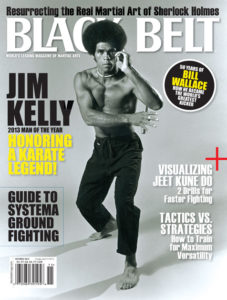
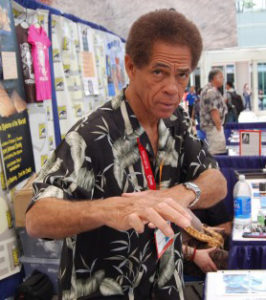
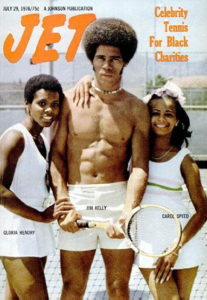
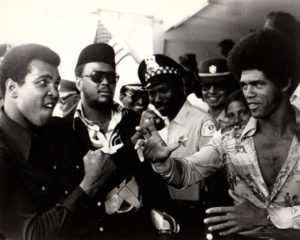
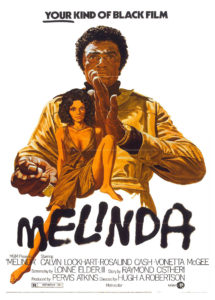


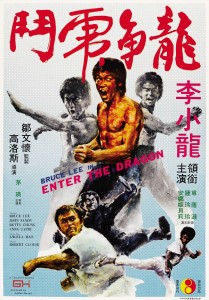


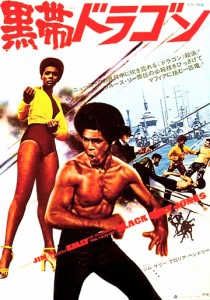


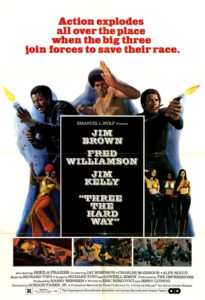
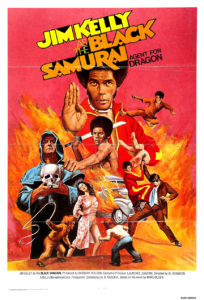
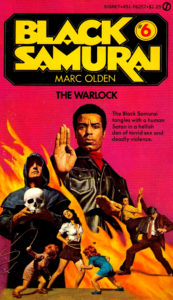

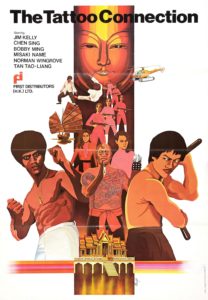
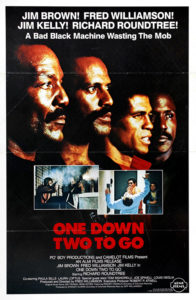


Excellent article. Love Jims movies. He had amazing charisma.